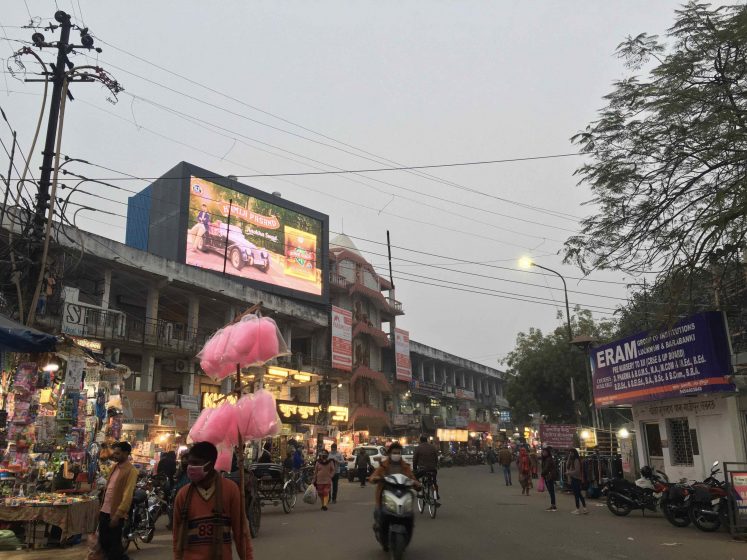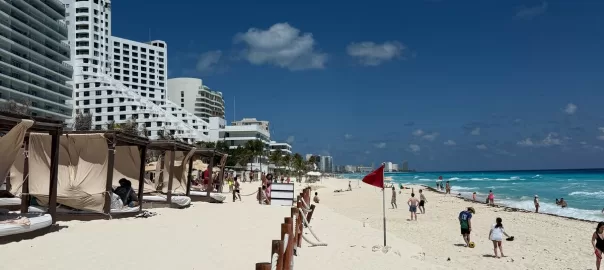Green recovery seems to be the only viable strategy for sustainable and resilient economic growth in post-pandemic era. Why aren’t we youngsters the final piece in the puzzle of ensuring its success?
As we have collectively moved towards unlocking the lockdowns and quarantines that had been in effect since March 2020, the world’s attention has been gripped in managing the looming economic crisis that has inflicted severe socio-economic impact. This impact shall increase exponentially in post-COVID era mainly on youth and marginalised groups with diminishing future job potential. In just the Third Quarter of 2020, working hours in Asia and the Pacific decreased by 10.7 percent in comparison to Fourth Quarter of 2019, translating to a loss of 400 million full-time jobs (ILO, 2020). In addition, working-hour losses has pushed an additional 22–25 million employed into working poverty. Yet, priorities of public governance have given negligible attention to new employment and any planning for future generations. The $20 trillion commitment by countries was primarily used for emergency fiscal stimulus to recover from fallout of COVID-19 rather than focusing on education and skill development of youth and those recently unemployed (UN Environment, 2020). Our governments’ reliance on such surgical and hasty solutions may fail unless the focus is enhanced towards long-term planning. Another governance challenge is that our world leaders are failing to acknowledge that their fight-or-flight response and “brown recovery” focused COVID-19 revival plans aim for short term recovery and thus are double-edged sword with long term ill effects. These shall add to existing colossal economic and climatic debt that is being passed on to our generation, Gen Z (Singhal, 2020). We shall be the last generation to settle these matters before reaching a point of no return.
 This crisis management approach however, must not threaten our existence. Especially in case of the Asia-Pacific region, the pandemic has stunted our progress in all SDG’s, especially the SDG 3, 4, 8 and 11 yet our governments plan of action and implemented strategies do not seem to be making desired progress and rather do the contrary. Current government fiscal stimuli is invested in immediate loans to households of lower income for necessities and keeping small-scale businesses intact as they are considered a major source of employment. While this is necessary, it will certainly not be a strategy for successful economic recovery, let alone green recovery. Instead, if we invest significantly in youth empowerment and provide ample resources for skill growth and incentives for business start-ups, households can become self-reliant and innovative youth-led businesses and start-ups can prosper. Who knows what these companies could achieve for humanity as many multi-billion dollar companies arose during 2008 economic crisis like Instagram, WhatsApp, Uber, Airbnb, Dropbox etc. all started by young entrepreneurs.
This crisis management approach however, must not threaten our existence. Especially in case of the Asia-Pacific region, the pandemic has stunted our progress in all SDG’s, especially the SDG 3, 4, 8 and 11 yet our governments plan of action and implemented strategies do not seem to be making desired progress and rather do the contrary. Current government fiscal stimuli is invested in immediate loans to households of lower income for necessities and keeping small-scale businesses intact as they are considered a major source of employment. While this is necessary, it will certainly not be a strategy for successful economic recovery, let alone green recovery. Instead, if we invest significantly in youth empowerment and provide ample resources for skill growth and incentives for business start-ups, households can become self-reliant and innovative youth-led businesses and start-ups can prosper. Who knows what these companies could achieve for humanity as many multi-billion dollar companies arose during 2008 economic crisis like Instagram, WhatsApp, Uber, Airbnb, Dropbox etc. all started by young entrepreneurs.
Sectors like public transit, hospitality and religious events involved mass gatherings of people, often leading to social and environmental distress even before the pandemic. We realise that their social construction was deeply flawed. For example, public transit in developing countries such as India consists of overcrowd metros and buses and the situation has not changed for years. A public sector initiative could include integration of ICT such as China’s movement tracking and health app that assigns colours indicating if people are healthy enough to be allowed to use certain routes of public transit and Sweden’s SL Transit Map which informs about best route commuter can take at a specific time. We have realised that despite pandemic keeping us holed in homes, world has grown smaller through dense social networking with youth at forefront of this. Our governments are working relentlessly to overcome this pandemic situation, though it seems only to revive the world structurally like the one that caused it to arise in first place. There is urgent need for revival of much stronger green recovery programme to come out of pandemic crisis with minimal depletion of human and natural resources. The need for green recovery has been ignored for too long even though its urgency first came to light during the 2008 global recession. This crisis showed that economic systems of that time solely depended on irrational actions of humans consuming resources indiscriminately, thus leading to global recession for same reasons, a third time after: first, the great depression of 1930s, and second, the energy crisis of 1970s! Out of those impacted by the 2008 recession, countries such as US, EU, South Korea, Japan and China, that invested in green fiscal stimulus, were able to stabilise their economies much easily and faster as there was a 0.1% and 0.5% increase in GDP for two years after the recession in these countries whereas in other countries there was a decline of about 3% to 5% (IEA, 2020). COVID19 unfortunately is a combination of an unprecedented global health care catastrophe as well as an economic crisis nearly at level of the great depression if not much worse. This is evident by contraction in global economy such as that of 23.9% contraction in India’s economy (MoSPI, 2020).
 Youth empowerment based green recovery
Youth empowerment based green recovery
Countries must be patient in reviving their economies and must start strategizing and implementing green recovery immediately by enhancing the awareness and engagement of their respective future decision-makers, the youth. This will be the deciding factor on whether actual progress can be made towards achieving the SDG’s, that seems harder now due to pandemic pushing us back many years. The concerned youth shall demand greater attention of this green recovery programme towards behavioural and lifestyle changes to protect our ecosystems and climate while accelerating economic revival. A few noticeable initiatives with linkages towards green recovery approach (though with limited focus on youth engagement) include, the European Union’s Green Deal; the focus on climate action by G20 Countries that account for around 80% of current global greenhouses gas emissions (Barbier, 2020); and measures by OECD and partner countries (OECD, 2020) focused on transition to greener economies. In order to sustain the effectiveness of such initiatives, it is critical to converge the focus on a crucial and unique human resource, the youth.
This calls for a youth empowerment based green recovery programme with a few specific aspects such as:
- Allocation of resources to major upliftment of youth skills and availability of resources for them in addition to existing focus on emergency loans and fund distribution to poor households and small-scale businesses. Youth empowerment shall also lead to increased output in businesses and households becoming self-reliant. The voices of youth to receive attention through dedicated youth columns in national daily’s to capture and highlight a new perspective for greater awareness generation.
- Productive engagement:
- Greater allocation of funds for integrating education online, as nearly 45% students worldwide do not have access to internet (WEF, 2020).
- Curriculum changes to ensure awareness about green recovery and its benefits and how to contribute at individual and institutional level.
- Vocational training for skills relating to green energy systems for private and government jobs such as that of solar panels installation, rainwater harvesting systems and electric vehicle maintenance.
- Increased youth representation in governance and decision making bodies.
- Stop funding and subsidies for new carbon intensive projects rather provide incentives for cleaner energy based development in villages and cities and more importantly by making youth aware of such schemes. The well aware youth that have a large network of contacts on social media, can be at forefront of this movement. The youth with more energy and time, can rapidly catalyse a large shift by holding campaigns both online and physically.
- SDG18: To advance humanity’s progress on all 17 SDGs, it is essential for global community to have special emphasis on ‘youth empowerment based green recovery’ as a new sustainable development goal – SDG18!
While we have talked of greener futures and development goals for over two decades now, why has there been very limited action on transition towards sustainable lifestyles and economies? Even after the financial stability harnessed by a few countries who invested in green fiscal stimulus during global economic disaster of 2008, why haven’t we learnt our lessons of putting green economic recovery at the forefront of economic crises? Why aren’t there hundreds of youth activists in the realm of sustainable development and associated crucial areas like climate change? The answer is simple: our governments and world leaders fail to see the missing link between them and future world leaders. In post pandemic era, special focus of global community on harnessing youth as a resource for “our” green recovery programme and its success in building a future resilient society, is vital!
Vishisht Singhal
Delhi
References:
- Barbier, E.B. 2020. Greening the Post-pandemic Recovery in the G20. Environ Resource Econ 76, 685–703. https://link.springer.com/article/10.1007/s10640-020-00437-w
- International Energy Agency. 2020. Green stimulus after the 2008 crisis. https://www.iea.org/articles/green-stimulus-after-the-2008-crisis
- International Labour Organization, 2020. Asia-Pacific Employment and Social Outlook 2020.https://www.ilo.org/global/about-the-ilo/multimedia/maps-and-charts/enhanced/WCMS_764077/lang–en/index.htm
- Ministry Of Statistics and Programme Implementation, Government of India. 2020. Press Note. http://www.mospi.gov.in/sites/default/files/press_release/PRESS_NOTE-Q1_2020-21.pdf
- Singhal, V. April, 2020. Stunting Our Immediate Future: A Teenage Perspective on Covid19 and Its Challenges. The Nature of Cities. https://www.thenatureofcities.com/2020/04/26/stunting-our-immediate-future-a-teenage-perspective-on-covid-19-and-its-challenges/
- The Organization for Economic Cooperation and Development. 2020. Making the green recovery work for jobs, income and growth.
- UN Environment, 2020. Learning for a green recovery.
- World Economic Forum, 2020. Coronavirus has exposed the digital divide like never before, https://www.weforum.org/agenda/2020/04/coronavirus-covid-19-pandemic-digital-divide-internet-data-broadband-mobbile/







Leave a Reply